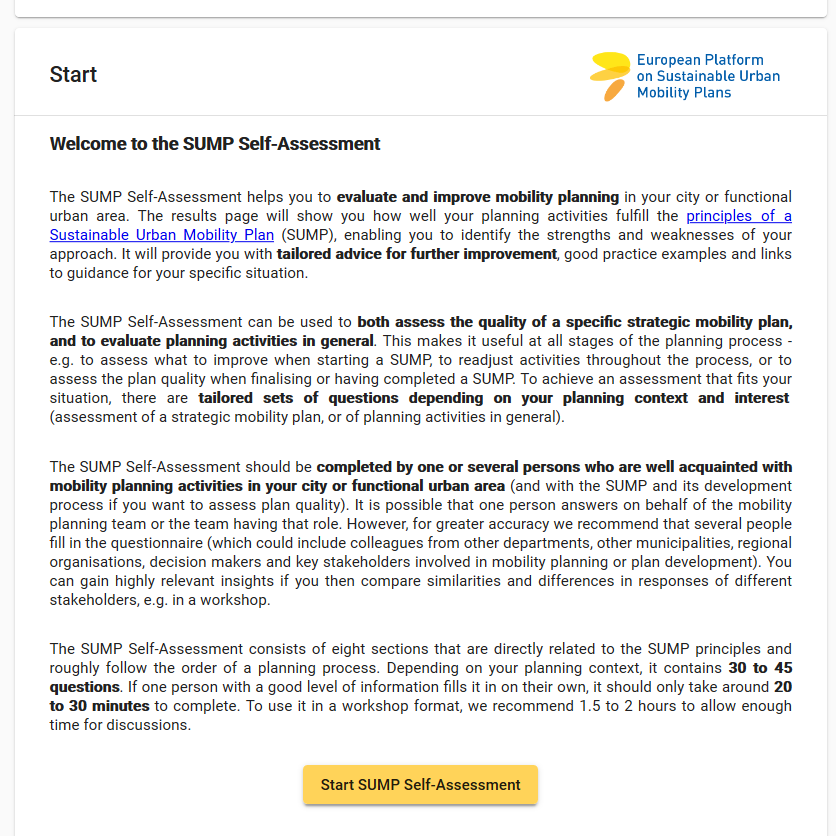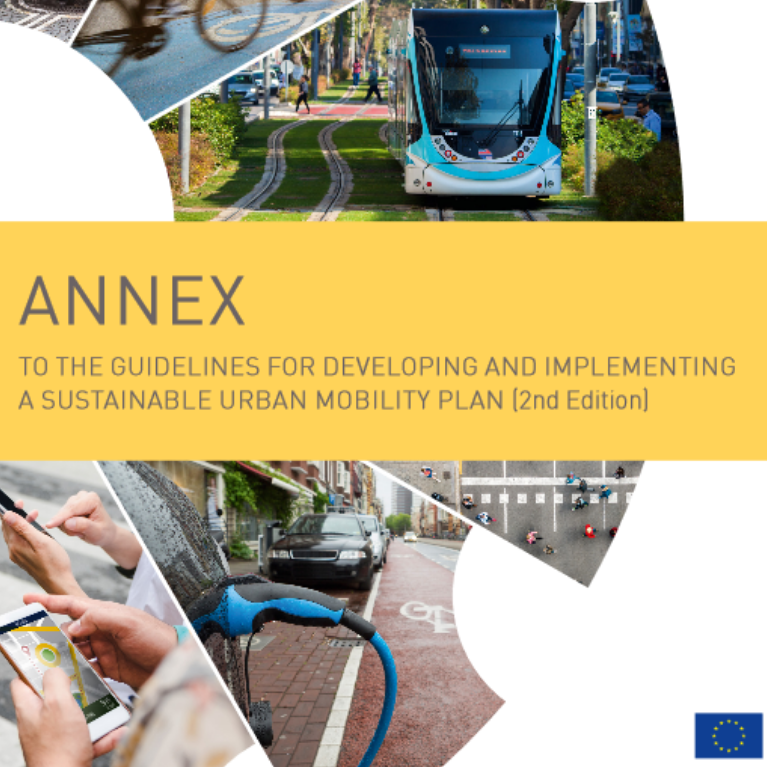With over 70% of EU citizens currently living in urban areas, urban mobility has a huge influence on the quality of life that they have. Yet traffic congestion, bad air quality, and inefficient transport systems continue to impact upon lives across the continent.
An approach is required that places citizens' needs first. By improving accessibility to, through and within urban areas and encouraging a shift towards more sustainable modes of transport, Sustainable Urban Mobility Plans do exactly this. Both cities and their inhabitants enjoy significant economic and environmental benefits.
As they integrate practices and policies from other sectors, SUMPs also help transport measures correspond with wider urban development plans. Transport then actively contributes to cities' efforts to become more sustainable and liveable. In doing so, SUMPs-Up fulfils its ultimate aim: to improve citizens' quality of life.

Do you want to evaluate your urban mobility planning approach and/or SUMP? Then try the new SUMP Self-Assessment tool! Fill out the questionnaire and receive an individual assessment, advice, links to further reading, and relevant good practice examples tailored to your specific situation.

The annex to the Guidelines for Developing and Implementing a Sustainable Urban Mobility Plan (second edition) is now available. This complements the original document with a collection of 63 case studies, a SUMP glossary, and SUMP activity checklists.
Inspired by success stories from European cities that have implemented Sustainable Urban Mobility Plans (SUMPs), the new SUMP poster illustrates the sustainable planning process for transport in an urban area. These are based on eight fundamental principles.